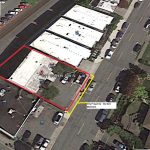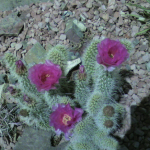Seattle Wildlife and Commercial Landscaping: What You Need to Know

According to the Washington Department of Fish and Wildlife, a typical neighborhood in Washington has more than 25 species of birds and mammals. Everything from foxes, hawks, squirrels, insects, amphibians, and more may be making their home near our buildings.
Depending on your type of building, you’ll either want to encourage wildlife, or discourage it. An apartment complex with a lot of green space would be enhanced by local wildlife, but the owner of an industrial park may not want animals hanging around. So what can you do to either welcome wildlife, or shoo it away? Let’s talk about what animals look for in a landscape, and how you can make that knowledge work for you.
An ideal habitat for wildlife has four things: food, water, shelter, and space.
FOOD
Animals thrive on nuts, berries, bugs, and flower nectar, and a variety of these food sources will mean a variety of visitors to your property.
- How to encourage wildlife: Try to use plants that produce fruit or seeds at different times of the year so animals have a steady supply of food. Many types of wildlife eat bugs, so stay away from insecticides. A birdfeeder is another way to encourage visitors, although you’ll have to dedicate a little bit of time and money to keeping it filled.
- How to discourage wildlife: Stay away from fruit trees, berries, or other plants that produce fruit or other edibles. If you’re using an insecticide for other reasons, it will also disrupt the food chain on your property and deprive many animals of their food source.
WATER
 Every creature depends on water to live, so animals will go a long distance to find it.
Every creature depends on water to live, so animals will go a long distance to find it.
- How to encourage wildlife: If your property has a natural stream or pond, you’re all set in this area. If not, try a bird-bath, or install a decorative pond or fountain.
- How to discourage wildlife: Keep an eye out for any areas of standing water, whether natural or man-made. Ponds, streams, and areas that fill up after it rains are all sources of hydration for neighborhood creatures, so remove or mitigate them if you can.
SHELTER
Just like humans, animals are looking for a place where they can be free from danger and bad weather. They’ll seek out sheltered areas likes trees and shrubs to nest and raise their young.
- How to encourage wildlife: Plant lots of shrubs and other leafy areas where animals can feel hidden and safe. Use vegetation to screen busy areas like driveways or sideways. Provide areas of fallen leaves of branches for insects and amphibians.
- How to discourage wildlife: Clean up fallen leaves and other plant debris to remove potential nesting areas, and keep shrubs well-trimmed. Having more hardscape elements in your landscaping will also remove areas where animals could nest.
SPACE
Animals require a certain amount of room to set up permanent residence on your property. Most often, they’ll probably live somewhere else and be passing through as visitors. But whether your property has a large or small amount of outdoor space, you can make it work for you.
- How to encourage wildlife: Provide out-of-the way areas where wildlife can feel safe. Think about planning an area with no human foot traffic that’s specifically intended for wildlife.
- How to discourage wildlife: Look for areas where animals might seek shelter, and try to mitigate them. Are there areas on your property with no nearby sidewalk, path, or other reason for human foot traffic?






